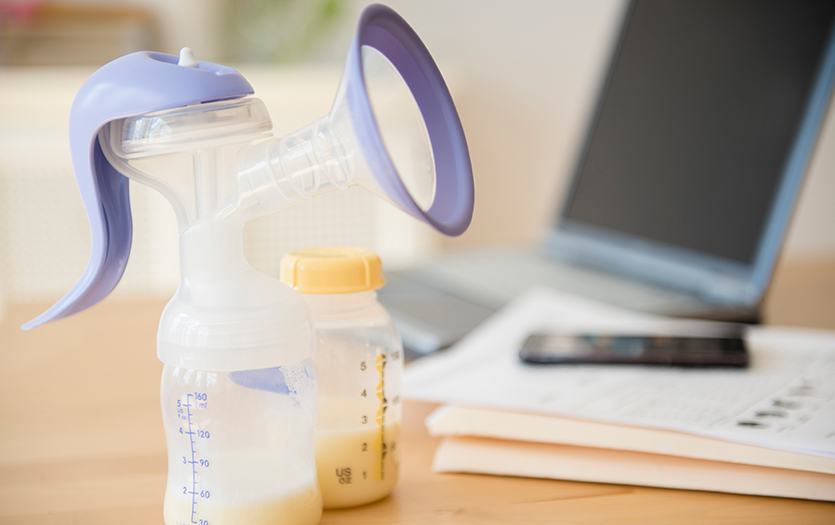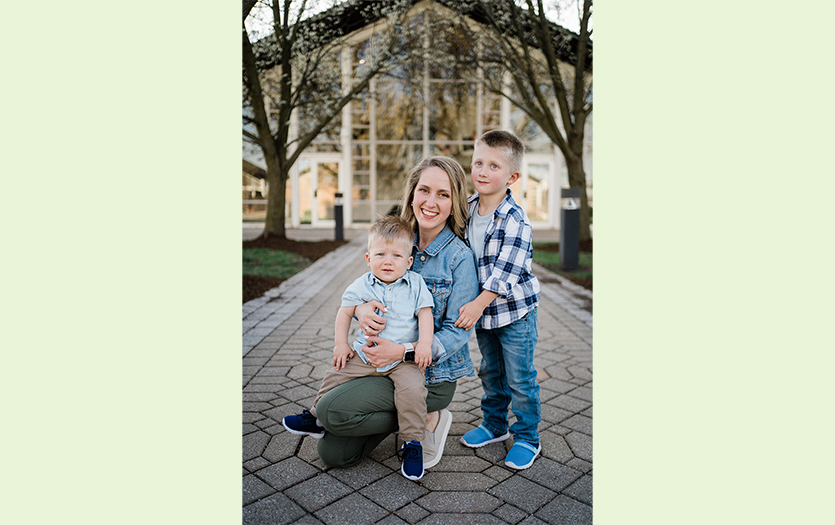
World Breastfeeding Week falls at the beginning of August and serves as a reminder of the benefits that come from a mother providing nourishment for her child, when and if she’s able. In a joint statement on the observance, UNICEF Executive Director Catherine Russell and WHO Director-General Dr. Tedros Adhanom Ghebreyesus, shared:
“In the last 10 years, many countries have made significant progress to increase exclusive breastfeeding rates. Yet even greater progress is possible when breastfeeding is protected and supported, particularly in the workplace.
“This World Breastfeeding Week, under its theme, ‘Let’s make breastfeeding at work, work’ – UNICEF and WHO are emphasizing the need for greater breastfeeding support across all workplaces to sustain and improve progress on breastfeeding rates globally.” Read the full statement here.
Reading for breastfeeding while working
For many postpartum women, returning to work means introducing or adjusting a pumping routine. This also requires brushing up on your knowledge around breastmilk storage. For help on these topics, read:
Pumping and storing for returning to work
Get our breast milk storage cheat sheet
How to get the most out of your pumping sessions
Troubleshooting common breast pumping issues
A Parkview mom making it work
Caitlin McGowen, MLS (ASCP), laboratory lead scientist, Hematology, Parkview Regional Medical Center (PRMC), a mother of two, can relate to the challenges of returning to work while nursing, and generously agreed to share her personal experience.
Caitlin has two sons, Owen, 5, and Adam, 16 months. “Owen was a very challenging nurser, and I had to rely heavily on the lactation consultants,” she recalled. “They had classes at PRMC twice a week, and throughout my maternity leave, I went to every class. He was struggling with latching, but breastfeeding was really important to me, and I was determined for us to have that journey. It was so good to work with the lactation consultants, and also to be with other moms and get out of the house. They also helped me with my transition back to work. I was able to breastfeed for 14 months.

“When my second came along, I knew what to do and I was more confident. I’m just getting ready to ween him off at 16 months, and it brings mixed emotions. I’m kind of excited to have my body back for myself, but also, it’s a little sad feeling like he doesn’t need me in that way anymore. But I know he needs me in different ways.”
Shortly after returning to work from her maternity leave with Adam, Caitlin received a promotion to lead in the laboratory. It was a role she was ready to take on, with the support of her co-workers.
“I was more prepared to go back to work after having Adam,” she said. “I had to relearn the routine, but I knew my coworkers and my manager were very understanding and respectful of breastfeeding. They gave me the time and space I needed to pump and continue with that journey. That took a lot of the pressure off, and I know that not all moms have that opportunity.
“When Parkview built the new tower on the PRMC campus, they put two mother’s rooms in the plan. With my first, it was a little less convenient, but now I have a place to pump that’s right down the hall. It has a sink for washing my pump parts and there’s a refrigerator in the breakroom for storing milk. It’s great, easier access.”
Caitlin is also a proud donor to the The Milk Bank, which provides safe access to breastmilk for infants in need. “I was blessed to be a bit of an over-supplier,” Caitlin admitted. “I donated with both of my pregnancies.” Since having Adam, she has donated just over 15 gallons (2,001.5 ounces) of breastmilk. “The process is really so simple, and now, with a depot location at PRMC, it’s so convenient. I just pull up and they come and get it. It means so much to me that I’m able to feed my babies, and NICU infants who really need those antibodies.” The health system also offers a depot location at Parkview Noble Hospital.
When asked if she has any advice for other mothers preparing to return to work while breastfeeding, her suggestion is to be clear about your needs. “I think just being honest and communicating with coworkers and managers and telling them what you need is key. Most people are very understanding and supportive.
“The other thing I’d say is just that mothers shouldn’t hesitate to reach out to family, friends, partners and coworkers to ask for help when they need it, especially during that postpartum period. There are so many transitions, particularly when it’s time to go back to work. It’s a lot! It can be very overwhelming and it’s important to talk it out with someone and pull in your provider if you need additional help. Self-care is so crucial. You have to fill up your own cup to better provide for your baby and family.”
More resources for breastfeeding mothers
Browse a list of offerings under the category “Maternity & Parenting” in the Classes and Events section on parkview.com for opportunities to meet with experts and other caregivers navigating life with a newborn.
If you found this article helpful, we think you might enjoy these posts from our blog, the Parkview Dashboard:
Benefits of breastfeeding for mothers
What to eat as a breastfeeding mom
Troubleshooting common breastfeeding challenges
How to boost your breastmilk supply
Addressing low milk production



